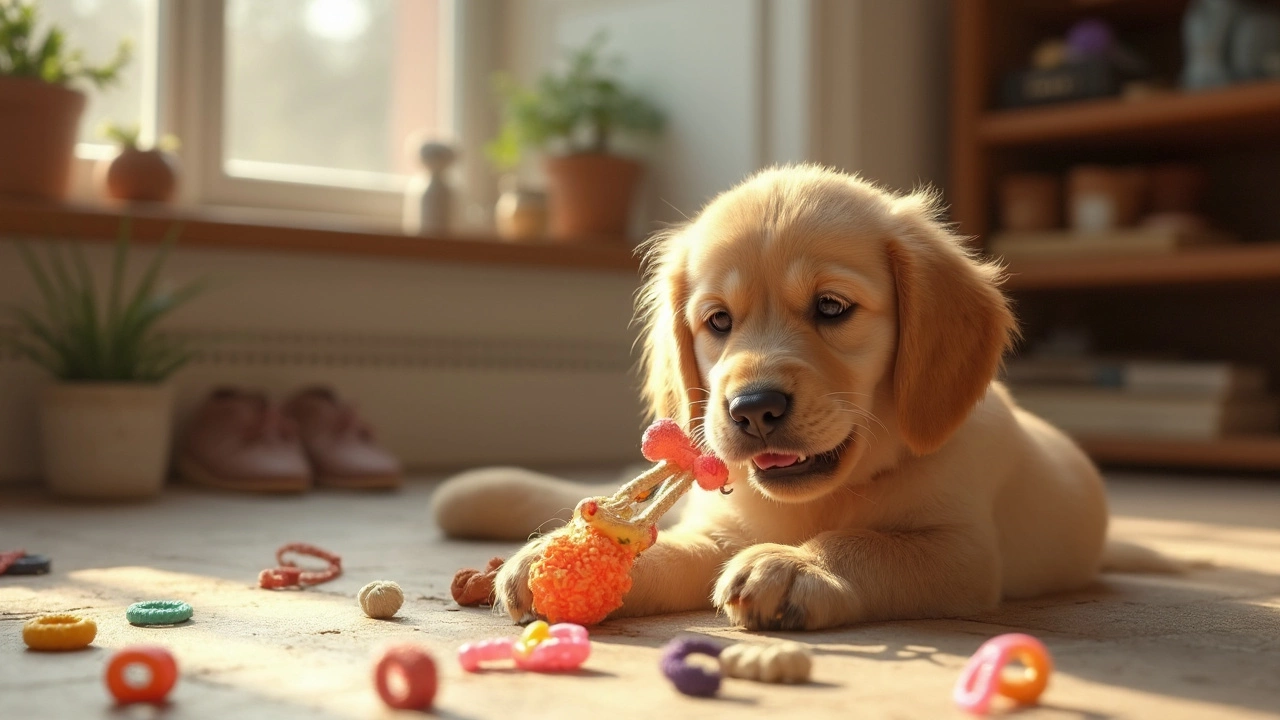What Puppies Chew – Guide to Safe Chewing and Common Hazards
When a new pup arrives, the first thing you’ll notice is a constant need to gnaw on everything. From shoes to couch cushions, that chewing urge is a sign of normal growth, not misbehavior. Knowing why they chew and what’s safe can save you money, protect your home, and keep your puppy healthy.
Why Puppies Chew
Chewing helps puppies relieve sore gums as their baby teeth fall out and adult teeth come in. It also lets them explore the world – a puppy learns what’s tasty, what’s dangerous, and what’s fun by putting things in its mouth. Stress, boredom, and anxiety can boost the urge, so a well‑exercised pup often chews less destructively.
Because the urge is natural, you don’t want to punish a puppy for chewing. Instead, give it something appropriate to bite and praise the good choice. That simple redirection teaches the dog what’s acceptable.
Choosing Safe Chew Toys
Look for toys that are sized for your puppy’s breed and age. A toy that’s too small can be swallowed; one that’s too hard can break teeth. Rubber toys, rope knots, and soft plush chews with reinforced stitching work well for most puppies.
Check the material label – avoid toys with small parts, loud squeakers, or paint that can chip. If your puppy likes to shred, gift a sturdy nylon rope or a dental chew that’s designed to break down slowly. Rotate the toys every few days to keep interest high.
Always supervise the first few chew sessions. If the toy starts to break apart, replace it right away. A quick visual check after playtime helps you spot hidden pieces before they become a choking hazard.
Besides toys, you can offer natural chews like frozen carrot sticks or bully sticks. Freeze a carrot for a few hours; the cold numbs sore gums and the crunch satisfies the bite instinct. Just make sure any rawhide or natural chew is sourced from a reputable supplier to avoid contamination.
Keep dangerous items out of reach. Electrical cords, small household items, and anything with toxic chemicals (like certain cleaners) should be stored safely. Puppies can’t tell the difference between a shoe and a chew toy, so a tidy environment reduces accidental ingestion.
If you catch your puppy chewing something it shouldn’t, stay calm. Interrupt with a gentle “no,” redirect to an approved toy, and reward the switch with a treat or praise. Consistency is key; the more often you replace the wrong item with a good one, the faster your puppy learns.
Regular dental care also curbs excessive chewing. Brushing your puppy’s teeth a few times a week reduces plaque buildup, which can make gums sore and increase the chewing urge. Talk to your vet about puppy‑friendly toothpaste and a simple brushing routine.
Finally, keep a schedule. Offer chew time after meals, before naps, and after play sessions. A predictable routine lets the puppy know when it’s okay to chew and when it’s time to settle down.
Understanding what puppies chew, providing safe options, and staying consistent will turn a destructive habit into a healthy, enjoyable activity for both you and your new friend.
Posted By Bryndle Redding On 20 May 2025 Comments (0)
What Can an 8 Week Old Puppy Chew On? Safe and Fun Ideas
Not sure what’s safe for an 8 week old puppy to chew on? This article breaks down the best chew options, danger zones, and tips to help you manage that constant need to gnaw. Learn how the wrong toys can hurt your puppy, why teething matters so much at this stage, and how to keep both your puppy and furniture safe. Let’s save your shoes and help your pup through the teething days without worry. Every tip here is something I’ve actually used at home.
READ MORE